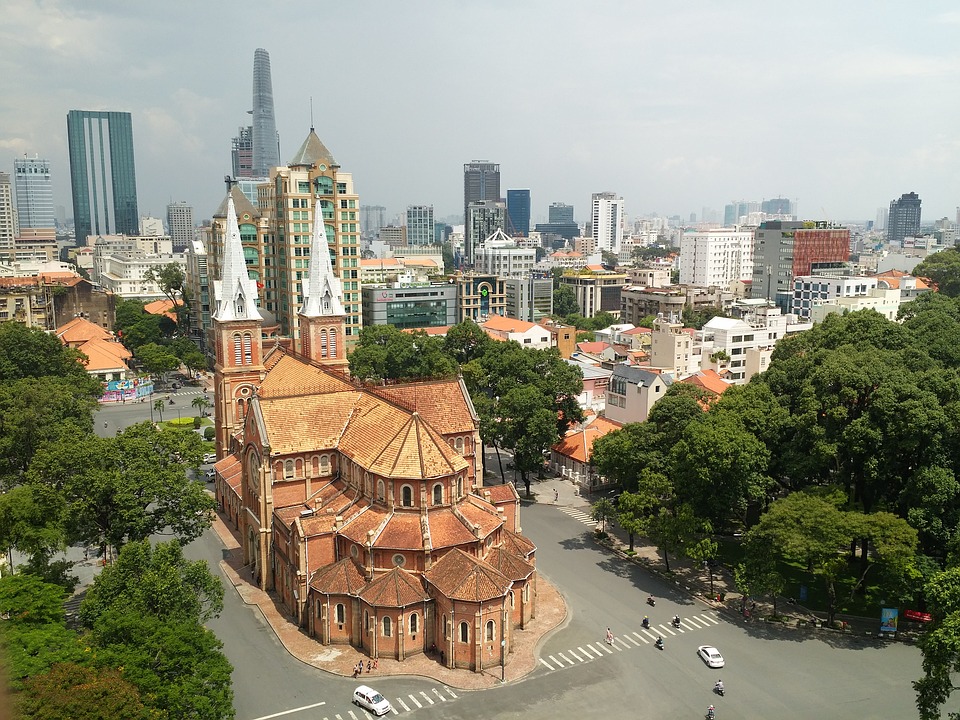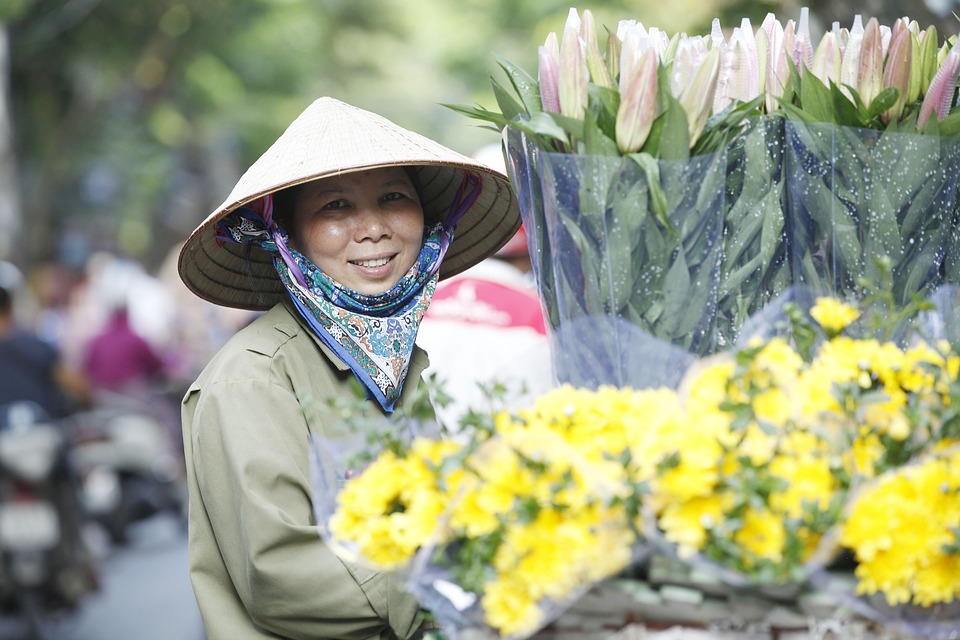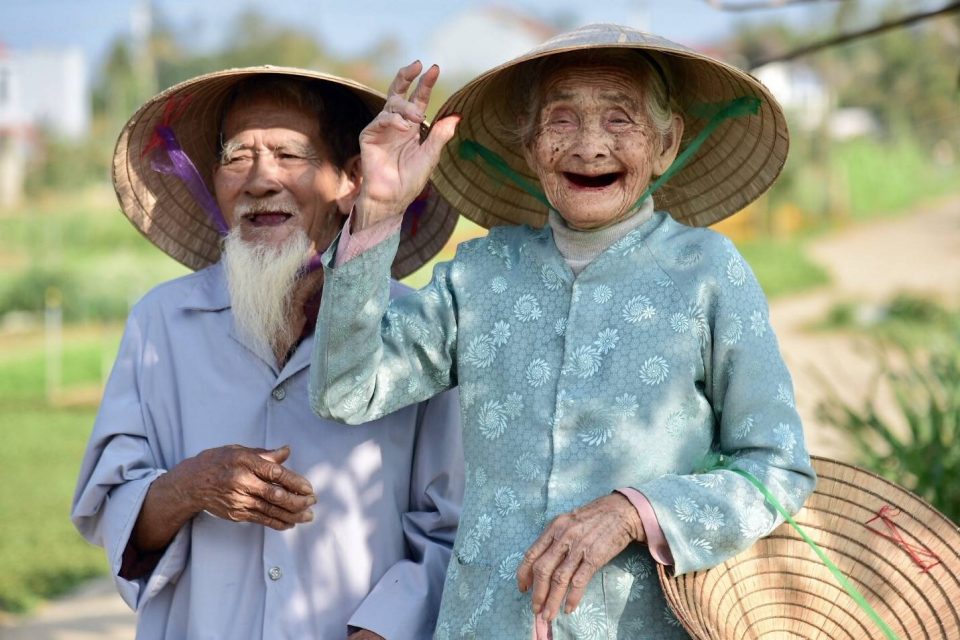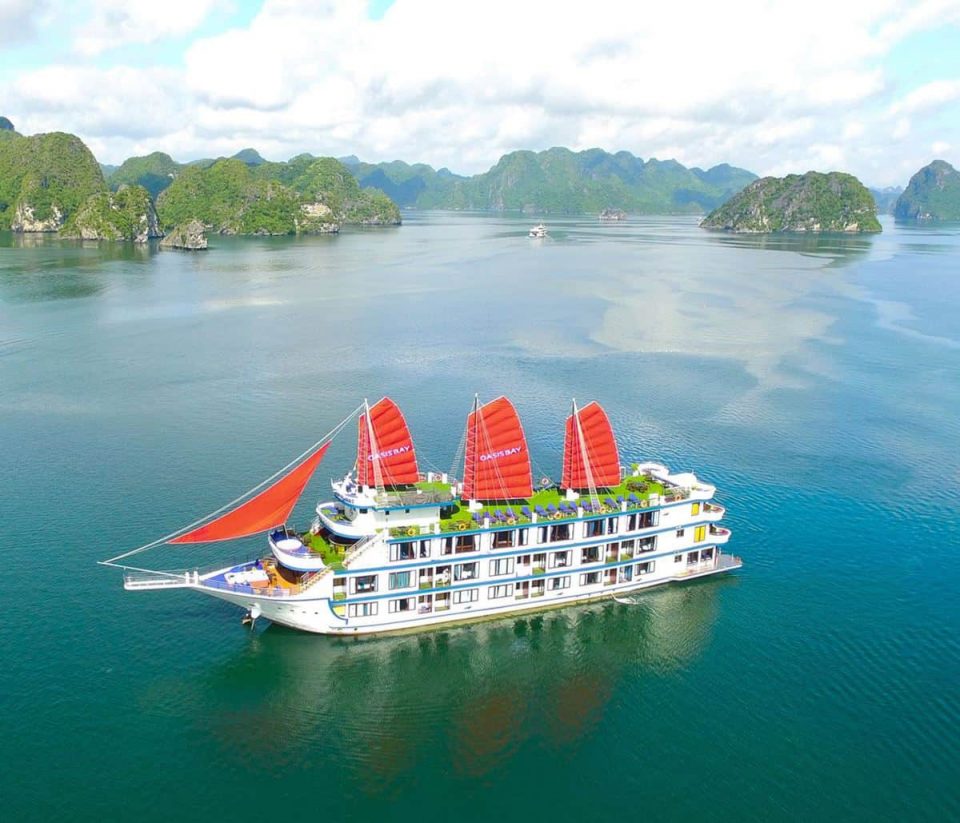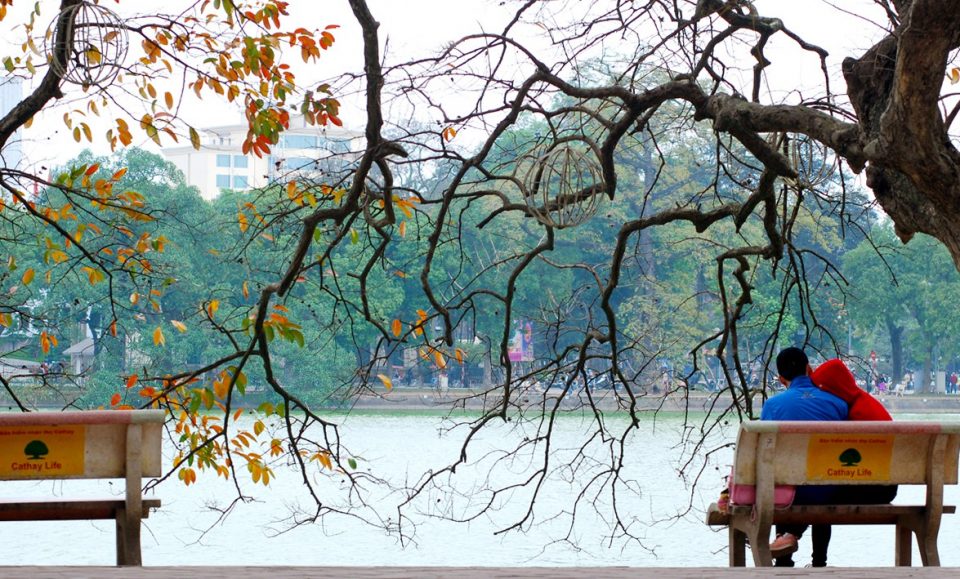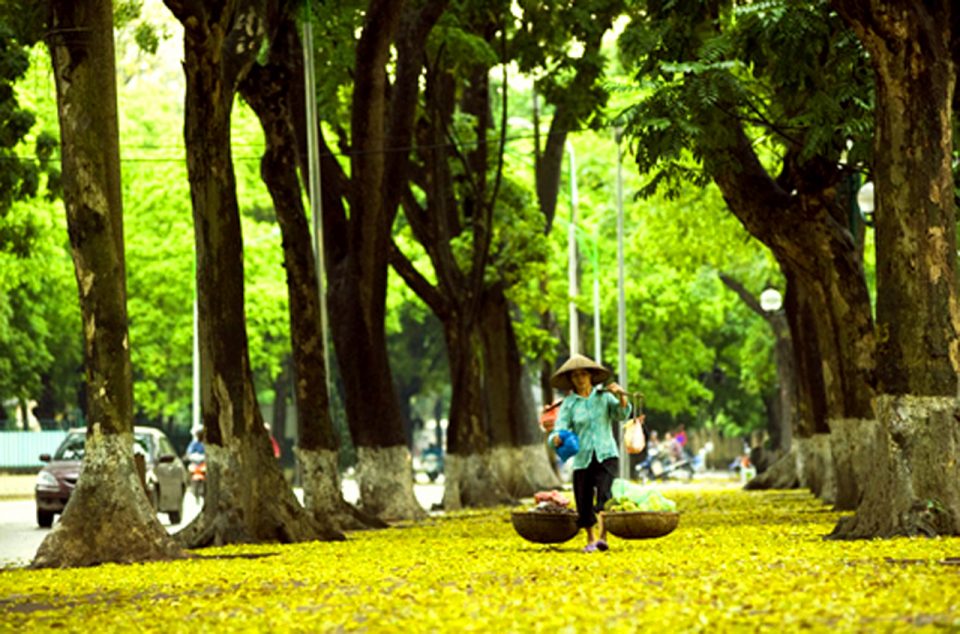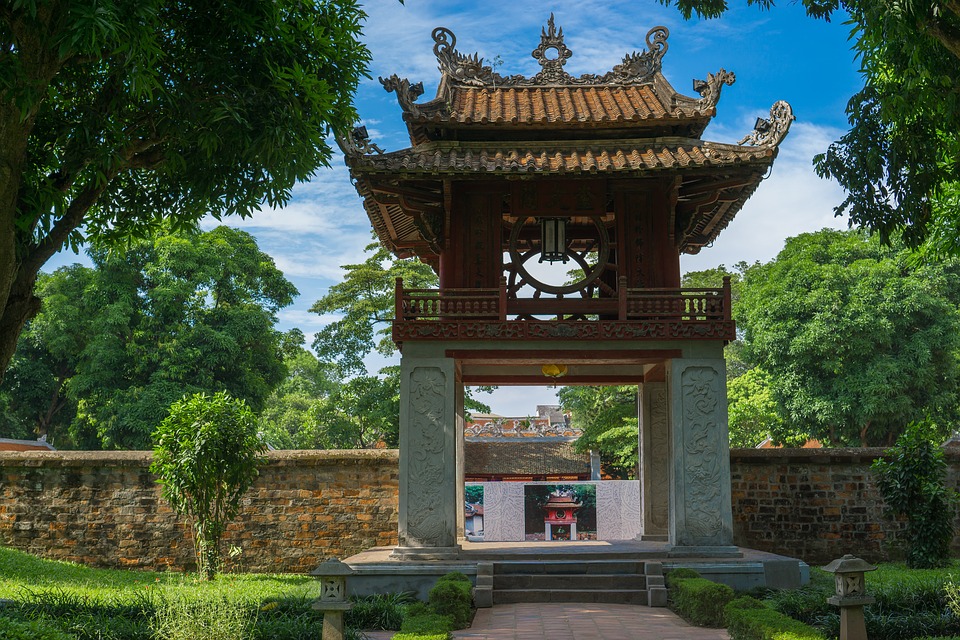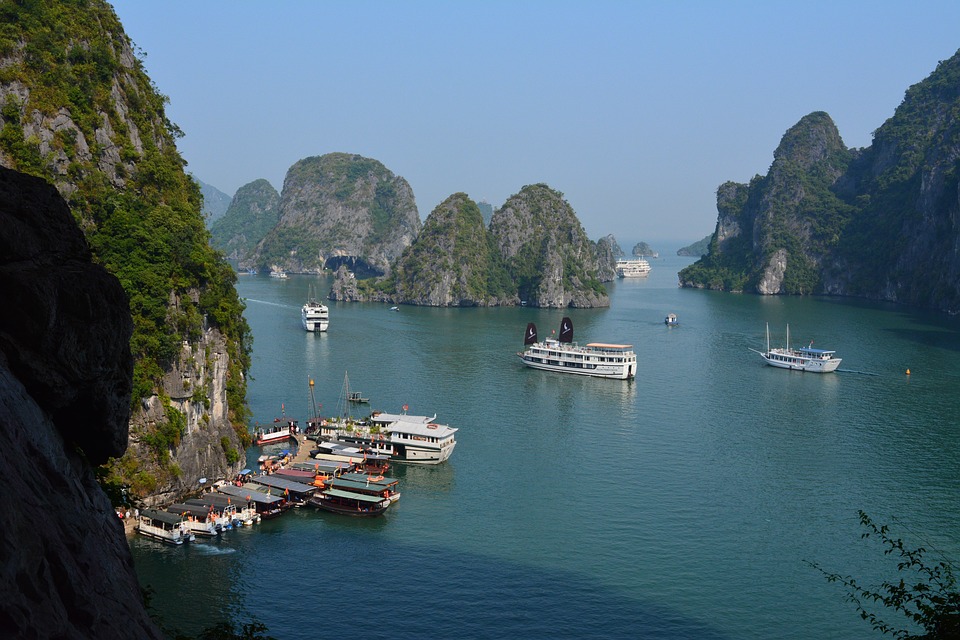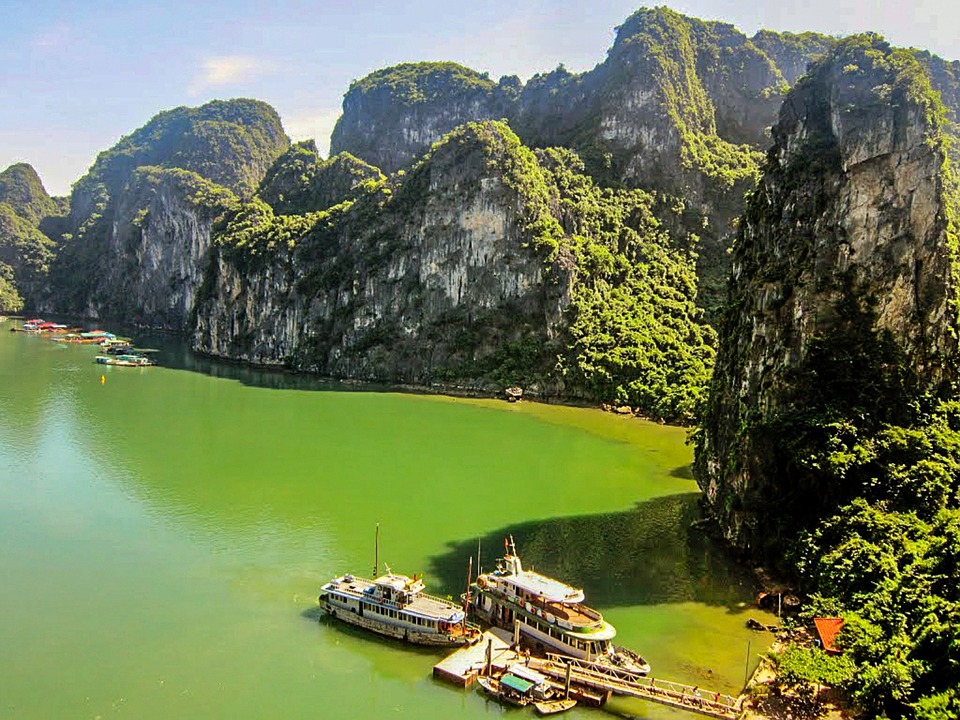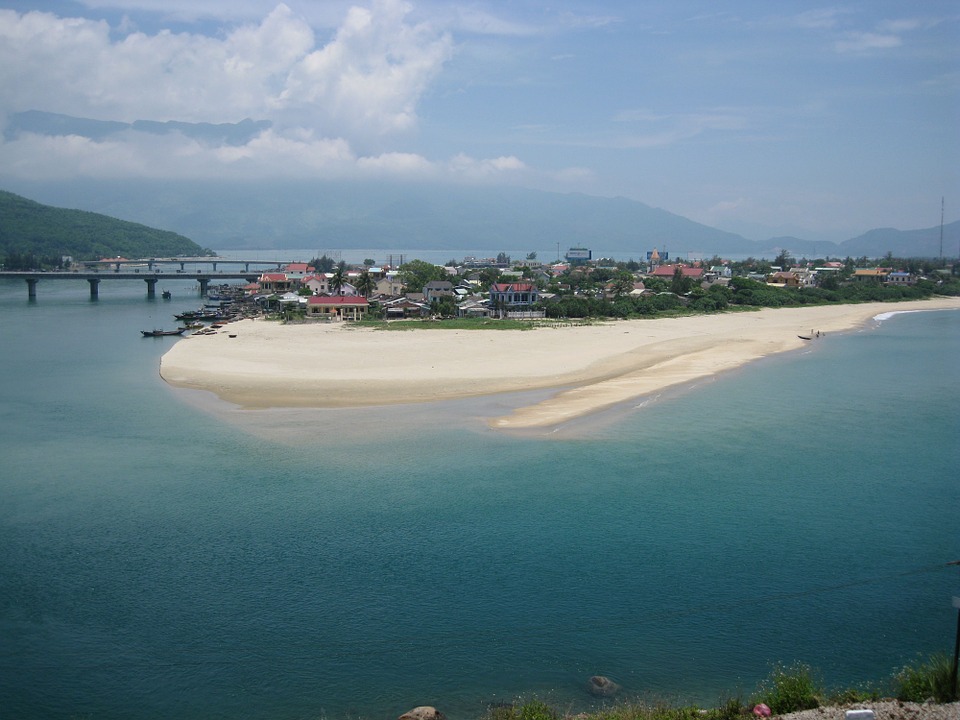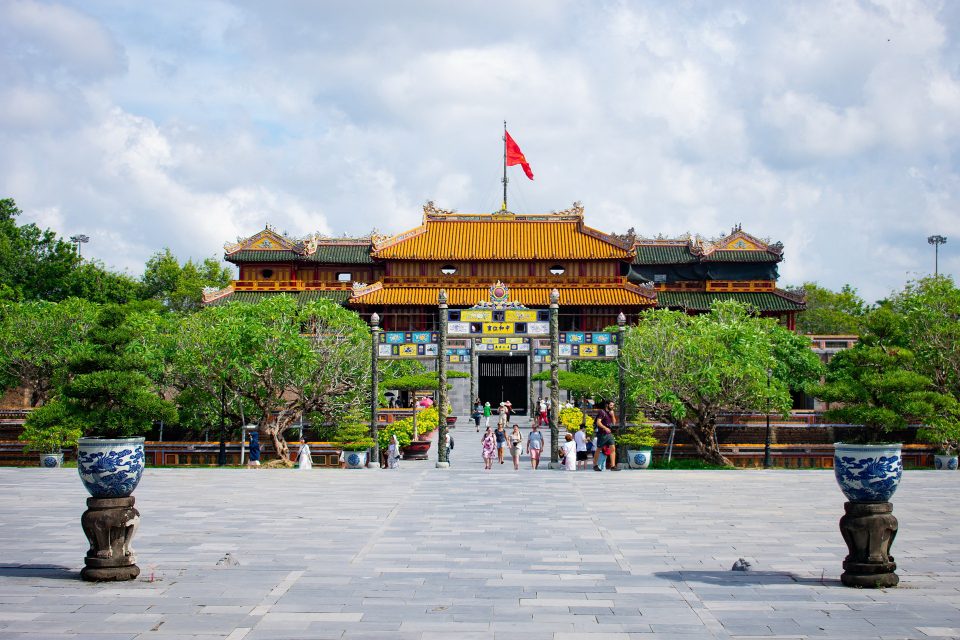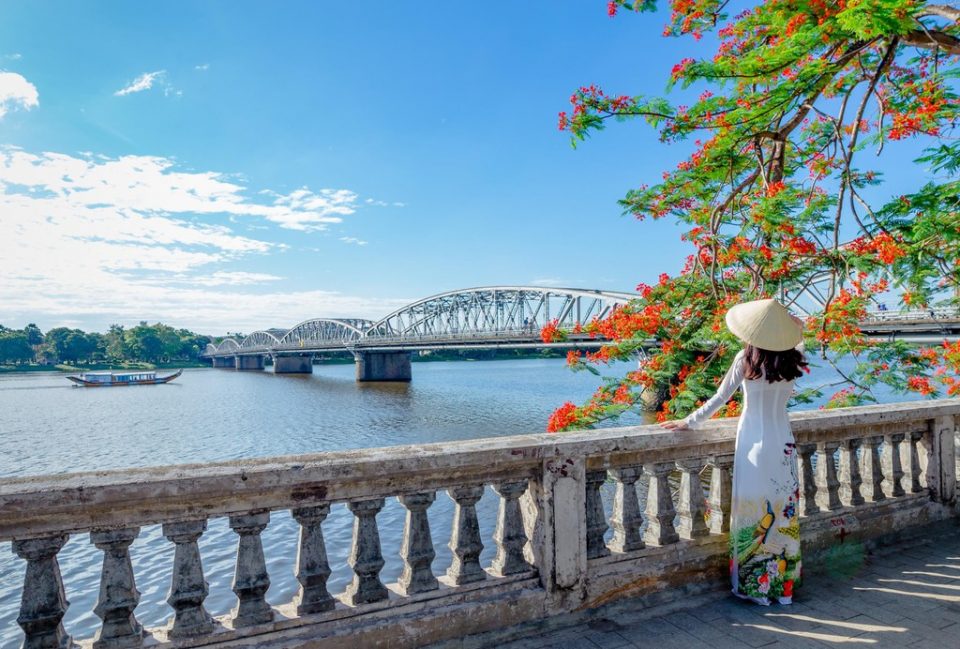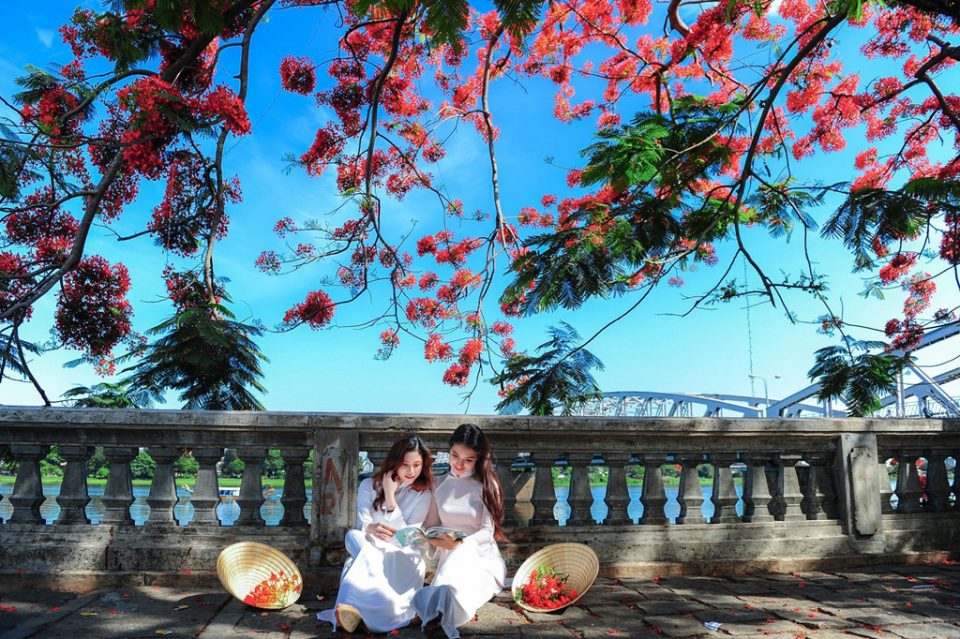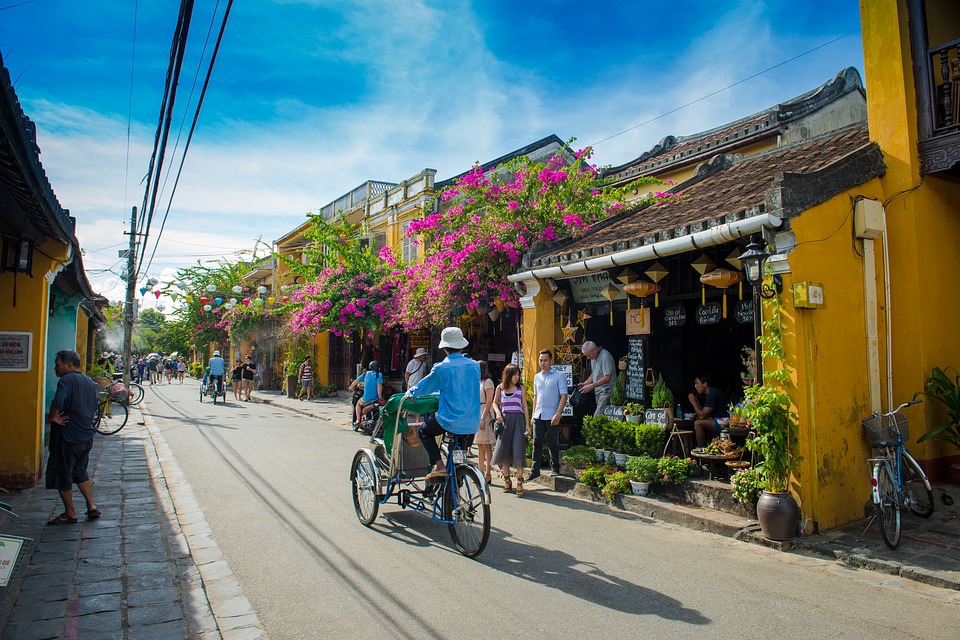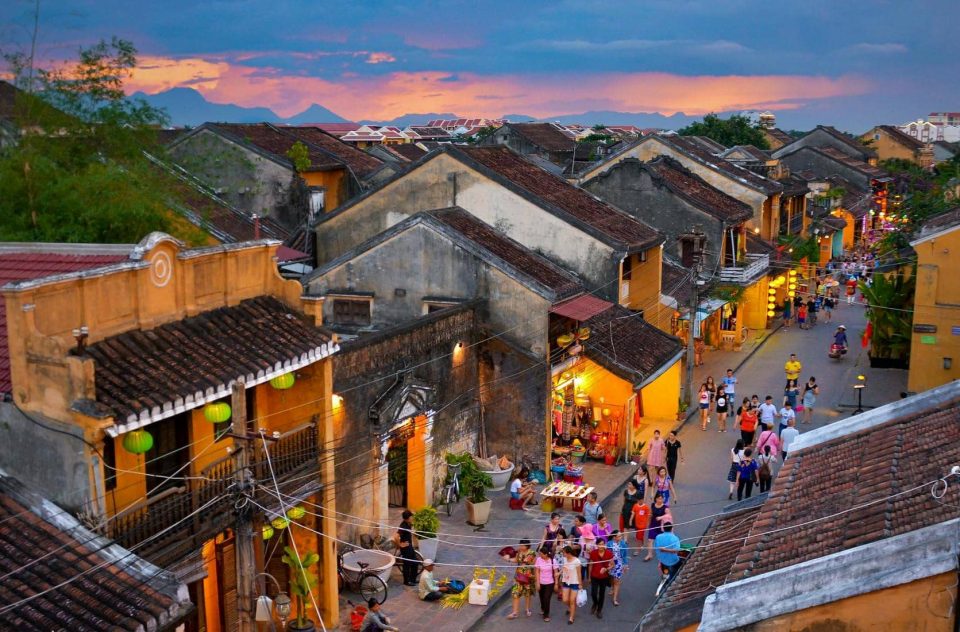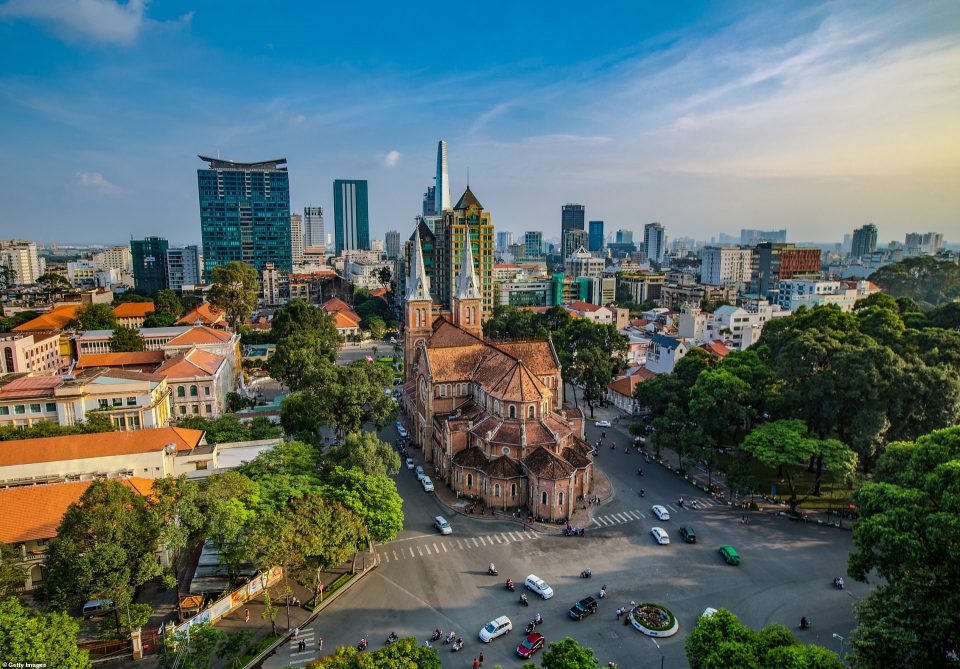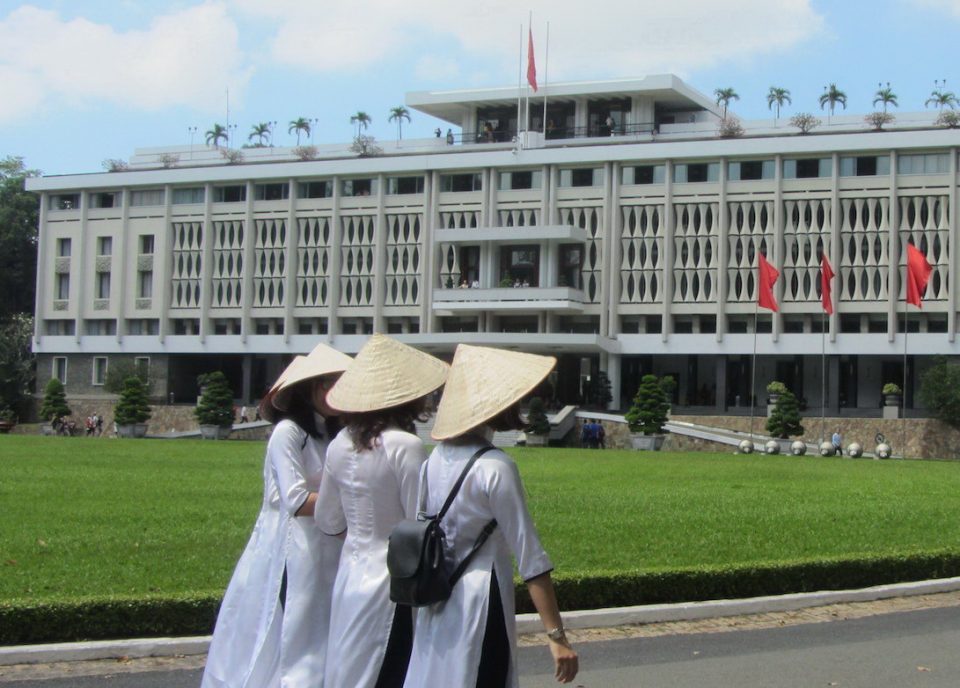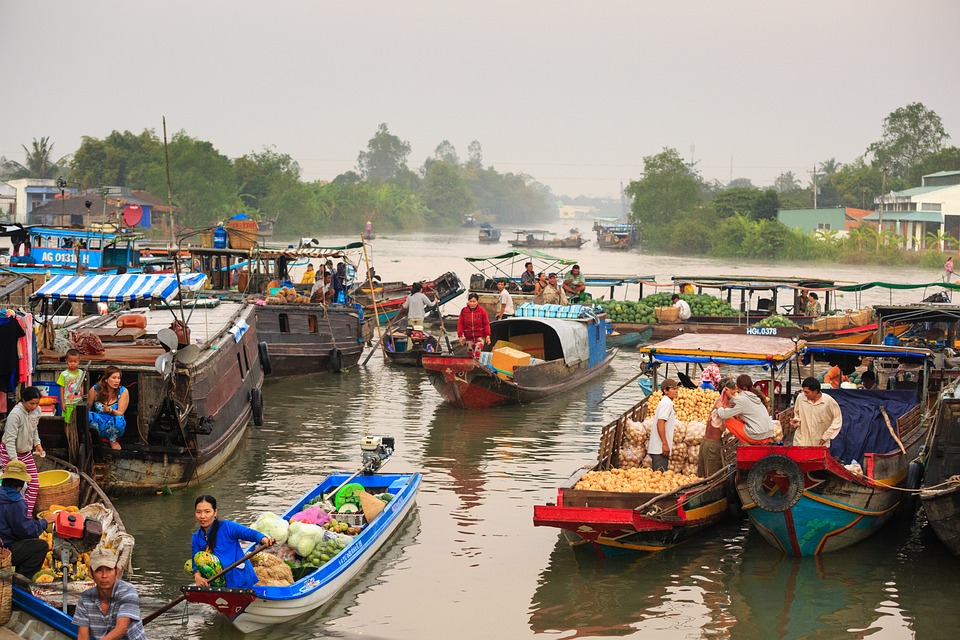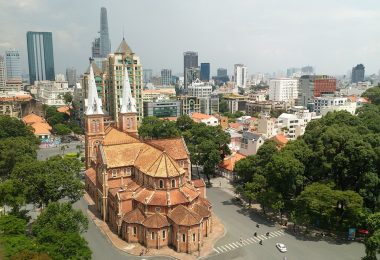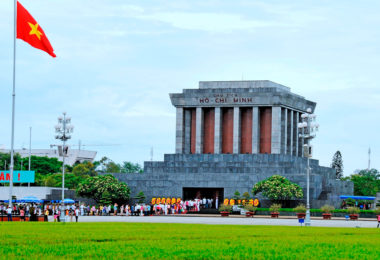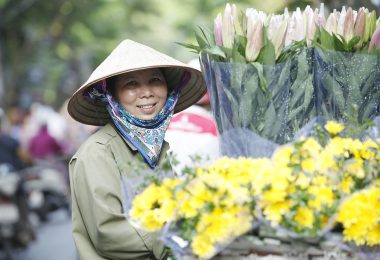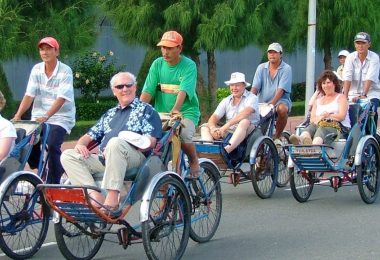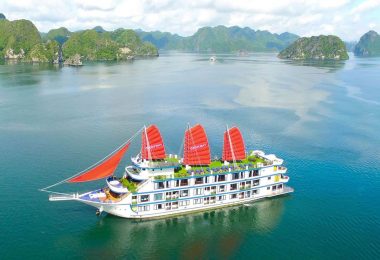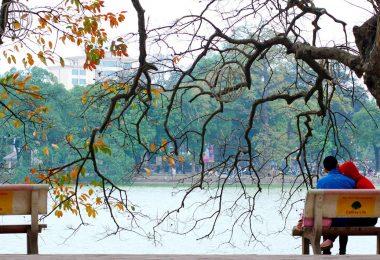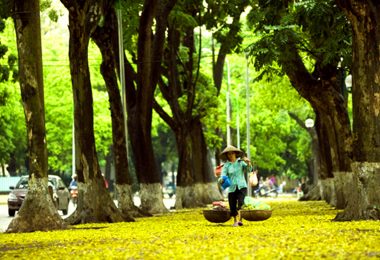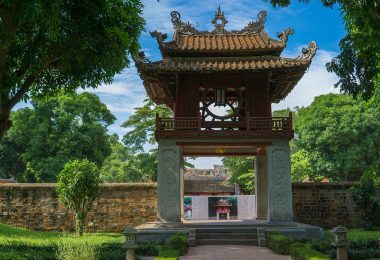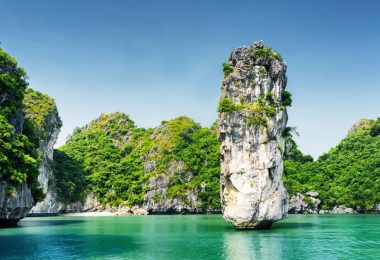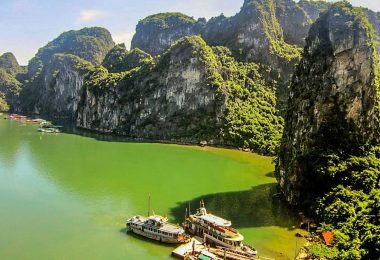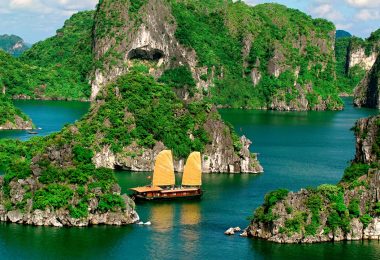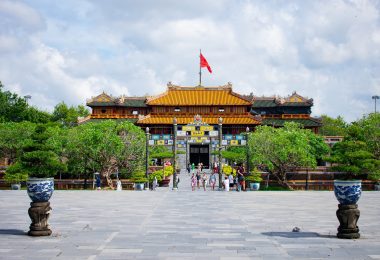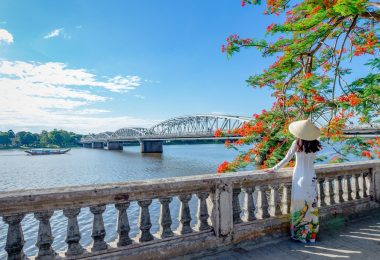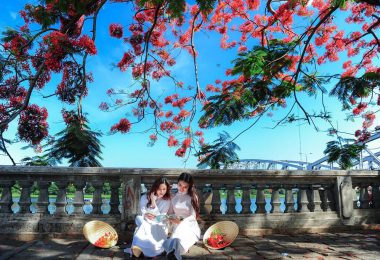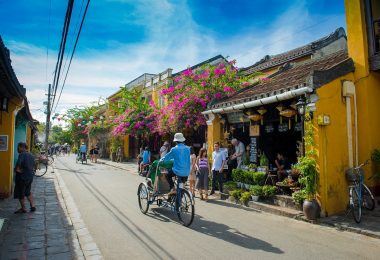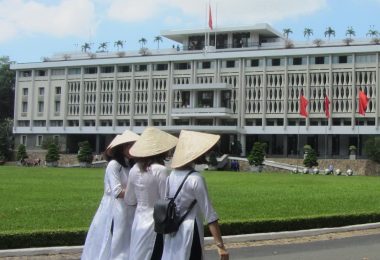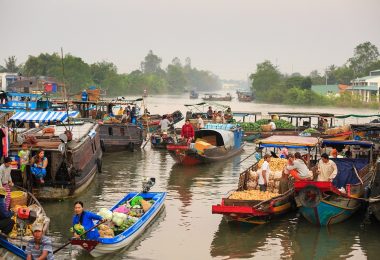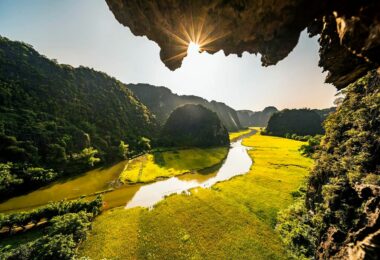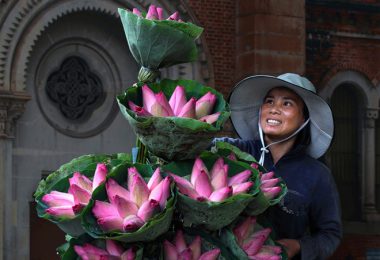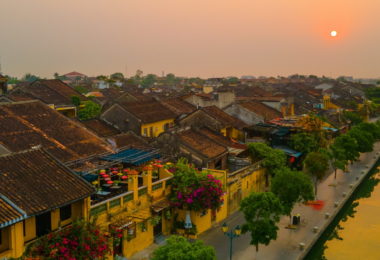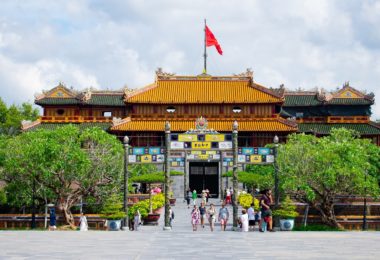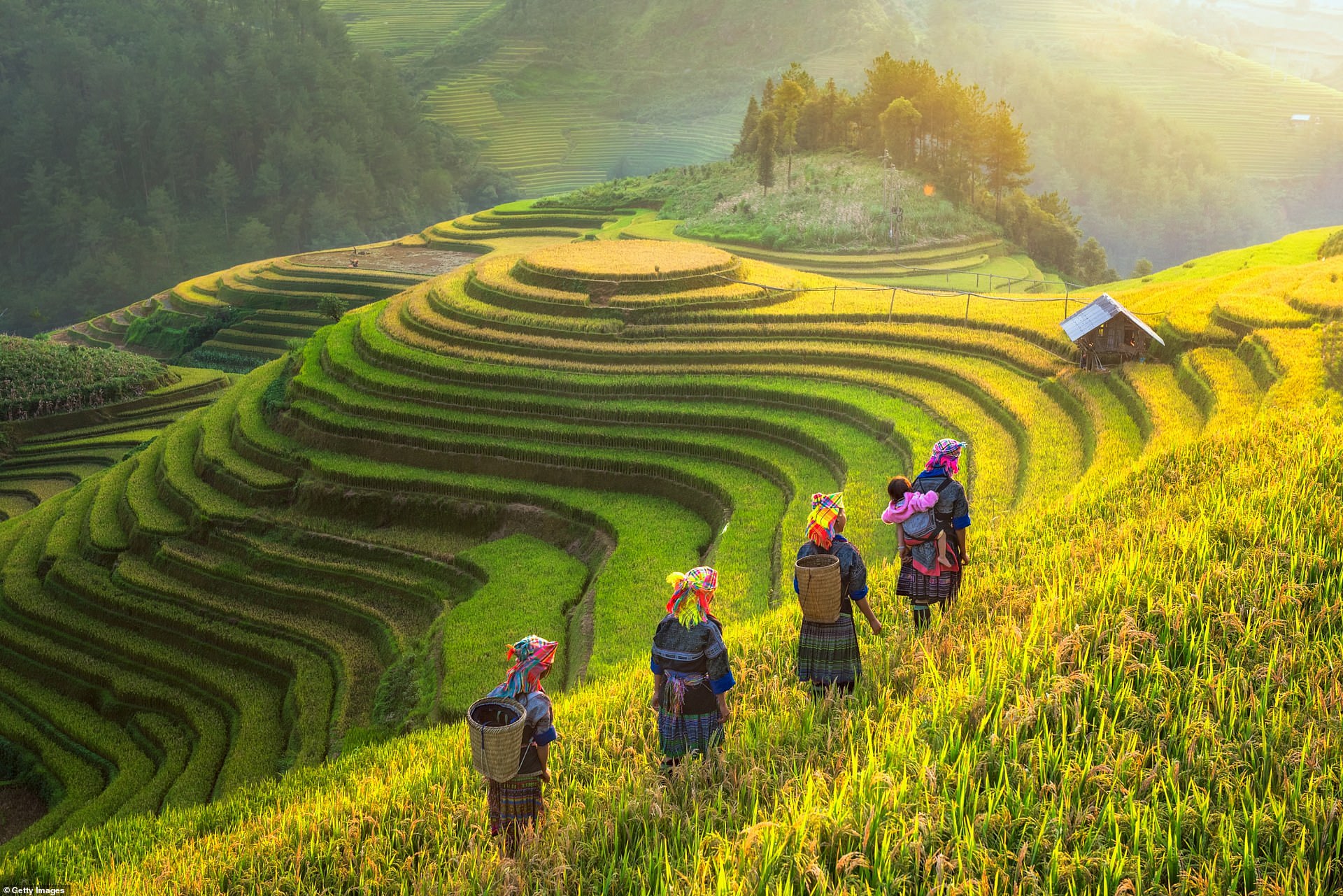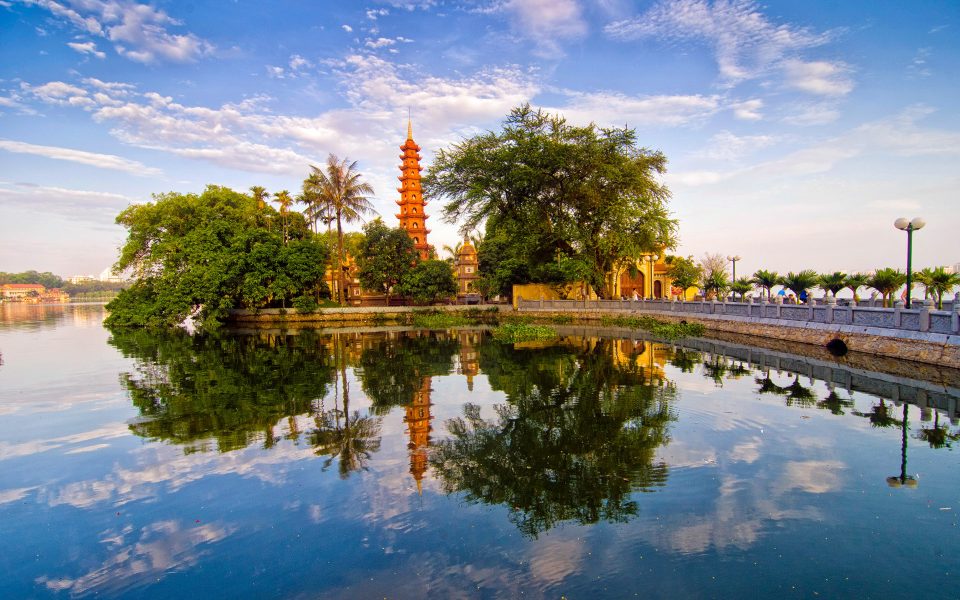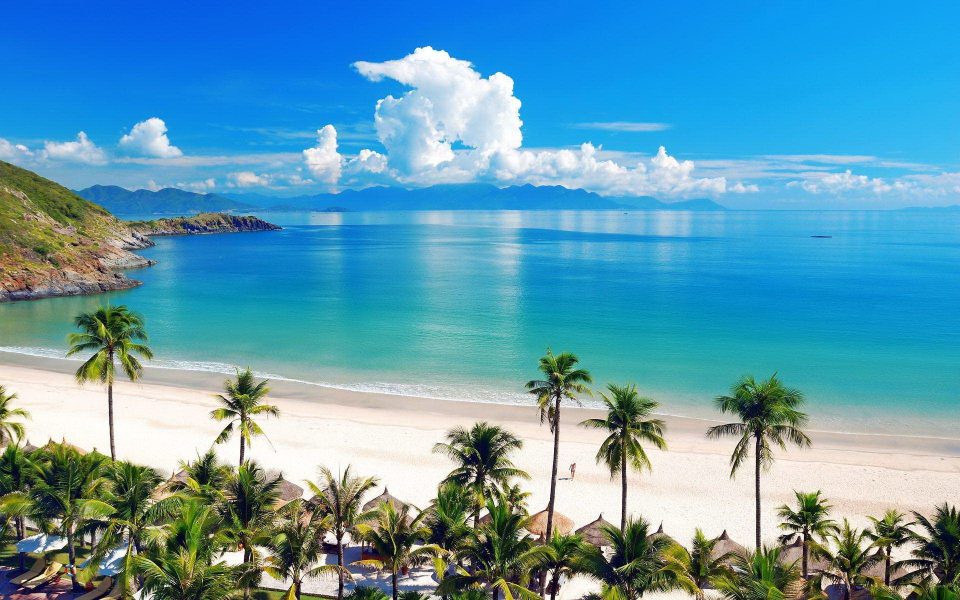The Nho Que River, a soft green ribbon winding through the majestic landscape of the Hagiang stone plateau, is a must-visit tourist destination. Originating from China, the river flows through Meo Vac district and creates a spectacular scene at the Tu San Gorge – one of the deepest and most beautiful gorges in Vietnam. From the top of Ma Pi Leng Pass, visitors can admire the grandeur of the Nho Que River, a vivid natural painting with emerald green water and steep cliffs. The Nho Que River is not only a destination for those seeking tranquility but also a starting point for limitless adventures and exploration. Each trip is a unique experience, and every moment on the river is a memory etched in the hearts of travelers. Visiting the Nho Que River is not just about visiting a place; it’s about embarking on a journey of discovery and genuine experience. The river is not only a part of the natural landscape but also a part of the local history and culture. It witnesses the daily life of ethnic minorities such as the H’Mong, Dao, and Lo Lo, who have lived along this river for generations. Visitors can engage in activities like kayaking, exploring ancient villages, and enjoying local cuisine to gain a deeper understanding of the life and culture of the local people.
Destination Highlights
Tu San Gorge
Tu San Gorge is one of the most famous and attractive tourist spots in the Nho Que River area in particular and Hagiang, Vietnam, in general. With a depth of 700-800 meters and a length of about 1.7 km, Tu San Gorge is the deepest gorge in Southeast Asia, creating a unique and majestic spectacle. At Tu San Gorge, visitors will see steep cliffs with unique shapes, along with the lazily flowing emerald green river, creating a wonderful natural painting. Tu San Gorge is a convergence of the grandeur and wilderness of nature. With towering cliffs, winding rivers, and wild natural landscapes, it is an ideal destination for those who want to explore and experience the thrill of adventure. Visitors can rent boats to tour Tu San Gorge from the water’s surface, appreciating the unique beauty of the gorge and the surrounding landscape. With its majestic and unique scenery, Tu San Gorge is an ideal place for photography. The photos taken here are often artistic and captivating. In addition to enjoying the beauty of nature, visitors can also learn about the geology of the area through guides or information boards at the site. When visiting, travelers can explore small paths, climb to the top of hills for a panoramic view of the gorge and the Nho Que River. Visitors can also learn about the stories and cultural traditions of the local people, such as how they live and work in this harsh natural environment.
Nho Que 1 Hydropower Plant
Nho Que 1 Hydropower Plant is also considered one of the unique and attractive tourist spots in Hagiang, Vietnam. Built on the Nho Que River, Nho Que 1 Hydropower Plant is not only a source of energy but also a tourist attraction due to its natural beauty and peaceful space. In terms of natural beauty, Nho Que 1 Hydropower Plant is nestled among dense forests full of green trees and the azure river, creating a dreamy and tranquil natural scene. With a large lake created from the storage of the Nho Que River, Nho Que 1 Hydropower Plant offers an attractive natural painting that draws visitors to visit and admire. It is also an ideal place for photography with beautiful natural scenery and the harmonious combination of water and greenery. Visitors can stroll around the lake, enjoy the view, and relax in the peaceful space of the hydropower plant, enjoying peaceful moments amidst pristine nature or even enjoy a fun picnic by the lake with friends and family, enjoying an outdoor meal in a natural setting.
Ma Pi Leng, located on National Highway 4C in Mèo Vạc district, Hagiang, is one of the most majestic and dangerous passes in Vietnam. Known as the “king of the passes" in the Northwest mountains, Ma Pi Leng is not only an attractive tourist spot but also an important part of local history and culture. Ma Pi Leng Pass was built with the pass’s peak at an altitude of about 1200m, on the Đồng Văn Plateau, by 1300 volunteers and 1000 laborers from 16 mountain ethnic groups, symbolizing determination and sacrifice. Therefore, it is considered one of the symbols of the highland ethnic people’s determination to overcome difficulties. From the top of the pass, visitors can enjoy a panoramic view of the Đồng Văn Plateau and the winding Nho Que River below the mountain. This is a memorable experience for those who love the grandeur of the scenery and the vastness of nature. Visitors can also go boating on the Nho Que River, conquer slopes and passes, and visit famous places like the Death Cliff.
Transportation
Hagiang in general and the Nho Que River in particular are famous tourist destinations in Vietnam. Although the development conditions here are not as prominent as in other major cities, transportation in this area has made significant progress. Tourists can travel to the Nho Que River by various common means of transport such as cars, motorcycles, etc. Personal vehicles are the most popular choice for visitors wanting to go to the Nho Que River. Visitors can drive or rent a car from neighboring cities such as Hagiang, Hanoi, or Caobang. The journey from Hagiang to the Nho Que River can take about 3-4 hours depending on speed and road conditions. However, if visitors want to experience the journey more freely and flexibly, renting a motorcycle is a good option. Visitors can rent motorcycles at rental points in the city and drive themselves to the Nho Que River. If time and budget allow, visitors can use the shuttle bus service from major cities like Hanoi or Haiphong to Hagiang airport, from there, visitors can rent a car or use taxi services to get to the Nho Que River. No matter which means of transport visitors choose, make sure to check the schedule, road conditions, and other factors before starting the journey for a safe and enjoyable travel experience.
Accommodation
Homestay is a popular choice for visitors who want to experience local life and get close to the ethnic culture. Local families often open their homes to welcome guests. This is a great opportunity to learn about the culture, cuisine, and customs of the local people. Visitors can refer to some homestays such as Nho Que Riverside Homestay, Nho Que Valley Homestay, Yen Minh Homestay, etc. Some small resorts and hotels have been built at the Nho Que River and surrounding areas, providing quality resort services and modern amenities such as Nho Que River Hotel, Yen Minh Hotel, etc., which are also very popular with tourists. Resorts are usually located in areas with beautiful scenery, such as by the river or on the hills, providing a relaxing feeling and enjoying nature. For those who want to experience nature more closely, camping and tenting are great options. There are many camping areas around the Nho Que River, providing a peaceful and comfortable space for visitors who want to enjoy the night under the starry sky. Before choosing a place to stay, visitors can consider factors such as budget, preferences, and travel purposes to have the best rest experience at the Nho Que River.
Dining
The Nho Que River and its surrounding areas in Hagiang are home to many ethnic minorities with a diverse and rich culinary culture. The first distinctive dish, “thang co”, is a traditional dish of the H’Mong people. It is made from the innards of cattle or pigs, cut into thin slices and then placed on clean banana leaves. “Thang co” is usually eaten with raw vegetables and hot rice. For those who experience this dish for the first time, they all comment that it is a very impressive dish. In addition, grilled salmon with wood is a popular dish at riverside restaurants. Fresh salmon is grilled over hot charcoal, creating a crispy outer layer and a distinctive wood flavor that is very suitable for meals by the river. “Com lam” is a traditional dish of the Tay and Nung ethnic groups. Rice is cooked in bamboo tubes, giving it a distinctive and delicious flavor. “Com lam” is usually eaten with roasted pork or grilled chicken. This dish surprises foreign visitors with its preparation and preservation methods. Glutinous rice wine is a traditional wine of the Tay and Dao ethnic groups. Glutinous rice is fermented in sticky rice and water from “lai” grass, creating a wine with a natural red color and a distinctive flavor. In addition to these dishes, there are other distinctive dishes that visitors should experience when coming to the Nho Que River because these specialty dishes not only embody the cultural identity of the Hagiang mountains but also provide a unique and interesting culinary experience for visitors when visiting the Nho Que River and surrounding areas.
Shopping
In the Nho Que River area and its surroundings, although there are no large shopping centers, visitors can still find small shopping spots to purchase local products and specialties. The periodic markets usually take place on holidays, festivals, or according to a fixed schedule in neighboring towns such as Dong Van, Yen Minh, and Quan Ba. Here, visitors can find a variety of goods from clothing, personal items to handicrafts and regional specialties. Grocery stores and small shops scattered in towns like Dong Van, Yen Minh, and Quan Ba provide daily necessities, personal items, and sometimes local specialties. Jewelry stores and handicraft shops are often concentrated in towns like Dong Van and Yen Minh, where visitors can find items made from silver, gemstones, and other natural materials such as wood, bamboo, leaves, etc. If visitors are interested in traditional clothing and costumes of the local ethnic groups, there are some stores specializing in these products in towns like Dong Van and Yen Minh. Every weekend, the Dong Van n night market takes place with many stalls selling all kinds of goods, from food to clothing and personal items. This is also a place for visitors to experience the lively atmosphere of night life in the mountains.
Climate
The climate around the Nho Que River in Hagiang is generally cool and pleasant throughout the year. The river itself is known for its stunning emerald green color, which is most vibrant and clear outside of the summer rainy season. During the summer, heavy rains can cause the water to become muddy due to sediment. For the best experience, it is recommended to visit during the times when the weather is milder and the river’s natural beauty is at its peak. The months from September to November are particularly ideal, as the region transitions into autumn and winter, bringing cooler temperatures and a refreshing atmosphere. This period also offers the chance to see the river sometimes shrouded in a mystical fog, adding to the enchanting experience. In summary, while the Nho Que River is a beautiful destination year-round, avoiding the rainy season and planning a visit during the cooler months can enhance the enjoyment of its natural splendor.
Travel Tips
When traveling to the Nho Que River and the surrounding areas of Hagiang, there are some important notes below that visitors should remember. Since the climate in the mountainous region often changes, visitors should prepare appropriate clothing including jackets, comfortable shoes, and sun hats. Especially in winter, visitors should bring enough warm clothes. The mountain roads in Hagiang often have steep slopes and sharp turns, so visitors should drive carefully, adhere to the speed limit, and always wear a helmet when riding a motorcycle. During the tourist season, hotels and homestays can become crowded. To avoid the situation of running out of rooms, visitors should book in advance through online booking websites or through local booking services. Some rural areas in Hagiang in general and the Nho Que River in particular may not have points that accept credit card payments or ATMs. Be sure to carry enough cash to pay for services and shopping. Exploring the mountains means having to move a lot on hilly terrain, so visitors should have enough health and stamina to participate in tourist activities, especially trekking and mountain climbing. Before going to a certain place, visitors should research information about the place they want to visit, which will help them plan their journey effectively and avoid unwanted risks.
Conclusion
Traveling to the Nho Que River and its surrounding areas is a journey full of impressive and memorable experiences for every visitor. Surrounded by majestic mountains and the vast river, guests will be immersed in the pristine beauty and distinctive ethnic culture of the Hagiang mountains. Visiting to the Nho Que River is not just about exploring natural beauty but also an opportunity to find peace and relaxation amidst unspoiled nature, creating beautiful memories for every visitor.




























